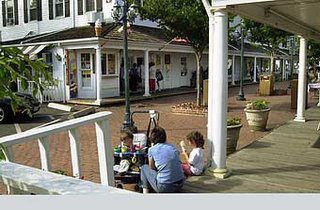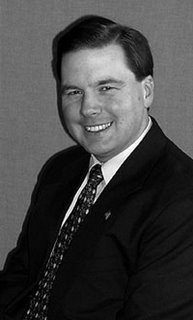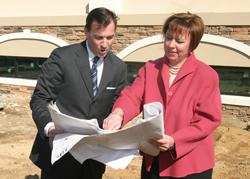Proposals for Funding Public Education from the Lone Star StateDid you say "taxes" or "Texas?" Was that "STAR" or "Lone Star?"Not that we would place much reliance upon initiatives that come out of the state that is first in executions and last in education, but at least a few of the recommendations that have resulted from a Texas study bear repeating here, and consideration up in Albany.The following "report" was prepared and presented by The Hoover-Koret Task Force on K–12 Education, Hoover Institution, and can be found, along with other studies and suggestions, at End Robin Hood Now. Given the historic implications of the Texas education model, which leaves most children behind and takes from the poor to give to the rich, even these recommendations, where applicable, should be taken with more than a small grain of salt. This is simply "food for thought," with the likelihood of serious indigestion to follow.We do agree, wholeheartedly, with one pertinent finding: A household’s property value is a poor measure of its ability to pay for local schools. It does not necessarily follow, however, as the study concludes, that local property taxes encourage school districts to be good, cost-conscious, and/or efficient. In theory, this sounds true. On Long Island, the practice demonstrates otherwise.SCHOOL FINANCEBackground
1. The key problems for Texas school finance are
• Ensuring that there are sufficient resources to educate all students in the state, regardless of their own family incomes;
• Finding statewide sources of revenue to fund this operation.
These two problems are shared by all other U.S. states, but the problems are more difficult in Texas because family incomes across the state vary widely and because districts’ nonresidential property wealth varies idiosyncratically with mineral deposits.
2. The current Foundation School Program, popularly known as Robin Hood, shares certain features of other states’ school finance systems. Given the amount of revenue it generates, however, the Robin Hood recapture system produces maximum inefficiency because a Chapter 41 district does not enjoy any increase in its revenue when its property values rise. Other state systems that generate similar or greater revenue are much more efficient.*
3. Robin Hood gives districts a financial incentive to maximize their weighted average daily attendance (WADA). Districts do this by assigning more students to remedial programs and keeping them there longer. As a result, the share of students who are disabled keeps growing in Texas, even though the state has significantly improved prenatal care and health insurance coverage for children. (In 1991–92, there were 1.29 WADA for every child enrolled; in 2002–3, there were 1.35 WADA for every child enrolled.)
4. Robin Hood also gives districts financial incentives to keep students in programs for the limited English proficient (LEP), rather than speeding their acquisition of English.
5. There are substantially better systems of school finance than Robin Hood, and this is an ideal time to replace it because the system is in crisis. Robin Hood has generated such high property tax rates and so much inefficiency that voters are desperate for property tax relief; most districts have reached the $1.50 property tax rate ceiling, at which the system’s constitutionality becomes questionable.
Guiding Principles1. Child-Centered Funding. School finance should be on a child basis, not a district basis. Moreover, parents should know how much revenue has been allocated for the education of their child. Such knowledge facilitates school reform.
2. Transparency. Parents, voters, and school board members should know how a child’s funding breaks down into local revenue, state aid, and federal aid. They should know how the expenditure per child breaks down into compensation of regular classroom teachers, compensation of other instructional staff, spending on facilities, spending on transportation,
and spending on all other functions. Such knowledge facilitates good governance of schools.
3. Children, Not WADAs. Spending and revenues should be expressed in terms of actual children. Funding should not be expressed in WADA units, which have no clear meaning to the public and obfuscate school funding.
4. Cost-of-Education Adjustments That Do Not Reward Failing Districts. In distributing aid, the state should account for cost differences that are out of a district’s control but should not give implicit rewards to districts that perform badly. Cost adjustments should be exclusively based on measures that are out of a district’s control because they are (a) determined by markets or (b) purely a function of the district’s population.
5. Districts Should Be Fully Insured against the Costs Associated with Severely, Permanently Disabled Students. Texas has some very small districts in which a few severely, permanently disabled students could constitute an unmanageable cost shock. Students who fall into this category include the blind, deaf, those with genetic handicaps, the mentally
retarded, and those with a physical disability.
6. State Aid Should Otherwise Be Block Grants Based on the Characteristics of a District’s Students. Most students with limitations have mild or remediable conditions. Districts should have no financial incentive to keep such students in remedial programs longer than is necessary. Therefore, districts should not receive state aid based on the number of children they classify as disabled or limited English proficient but on the characteristics of their student populations, especially measures of poverty and native language.
7. Redistribution Should Be Lump Sum, to the Maximum Extent Possible. Efficient systems of school finance use lump sum redistribution as much as possible. That is, the state should equalize districts’ access to the first dollars of school revenue up to a solid foundation amount. The state should not equalize the last dollars of school revenue. These are basic principles of good public finance.
8. Local Control Should Be Maintained and the Last Dollar Should Be a Local Dollar. Local governance of schools is vital because it is much easier for local people to observe whether their school is performing well and spending money efficiently than for state officials to make such observations. However, if the last dollar of school spending is not a local dollar, local people have little incentive to ensure that their schools spend efficiently. Also, if the last dollar of school spending is not a local dollar, then a school administrator whose performance is outstanding cannot be rewarded by the local people who witness that performance. In short, having the last dollars be raised and controlled locally generates incentives for schools to spend efficiently and to improve their performance.
9. State Aid Based on Households’ Ability to Pay, Not Their Property Values. In order to distribute aid efficiently, a state must determine the ability to pay of each district’s residents and property owners. To the maximum extent possible, the state should measure each family’s ability to pay by its income, as opposed to the value of its property.
10. State Aid Funded by an Efficient Tax. No tax is painless and every tax has opponents. However, the tax that funds state aid ought to be as efficient as possible. It should follow key principles of an efficient tax: the base ought to be as broad and the rate as low as possible; the base ought not be one that shrinks substantially when taxed; there ought not be double or "pyramid” taxation wherein the same base gets taxed multiple times.
11. New State Revenues for Education Should Generate Actual Property Tax Relief. If the state raises new tax revenue for education, property taxes should be reduced and stay reduced. The new taxes should provide property tax relief, not just increase the total tax burden.
Proposal
1. To the maximum extent possible, the new school finance formula ought to be expressed on a per child basis, not a per district basis. It ought to be easy for the public to learn that a child in district A gets one amount of state aid and a child in district B gets another amount of state aid.
2. At all levels of reporting, funding should be reported per actual child (average daily attendance), not inWADA units.
3. Severely or permanently disabled students are a tiny share of the state’s total student population. Less than 1 percent of students in Texas are blind, deaf, mentally retarded,
genetically handicapped, or in need of residential care. The state should determine the extra costs associated with such students, and state aid should fully insure districts against such costs.
4. Most students with disabilities and other special situations have conditions that are mild or remediable. For these students, there is a danger that districts will keep them out of regular classrooms too much or address their problems too slowly. Such students will be best off if districts offer them the remediation that will most efficiently address their needs, not the remediation that maximizes revenue. Unfortunately, the current system of state aid gives districts a financial incentive to keep students out of regular classrooms too often and for too many years. This needs to be changed. State aid for all nonsevere, nonpermanent disabilities should be based on the characteristics of the student population that a district faces, not how it classifies them. Aid should be in the form of per student block grants based on the existence of students in the district’s population who are poor, not native-English speakers, and so on.
This system will not create perverse rewards for districts that keep children out of mainstream classrooms or that keep students excessively long in non-English language settings.
5. The cost-of-education index should be based only on costs that are out of the district’s control. In order to be out of a district’s control, a cost must be caused by the market or by the local population. Measures of such costs include • Local pay for college graduates in private employment (set by the local private labor market);
• Local pay for nonprofessional staff such as janitors and bus drivers in private employment (set by the local private labor market);
• Local costs for private construction contracts (set by the local private market for construction);
• The percentage of the school-aged population from households with foreign-born parents from non-English speaking countries (local population);
• The percentage of the school-aged population from poor households (local population);
6. Empirical analyses of school cost information have been used for a variety of purposes. Because the analyses rely on observing the current operations of schools under some of the perverse incentives that exist, it is not possible to determine reliably how much spending is needed.
On the other hand, such analyses can help to inform decisions on cost differences for districts because of such things as special education, LEP, district size, or differences in the labor market for teachers. Determining the costs of providing local education should not be based on typical statistical analyses that relate student achievement to inputs. Cost estimates based on statistical analyses with published “coefficients” for input-achievement relationships are inappropriate because they are not based on exogenous variation (experimentally driven variation) in student characteristics, programs, and expenditures. Inevitably, such analyses generate implicit rewards for districts that fail because those districts automatically appear to have high educational costs for their achievement.
Thus, statistical analyses tend not only to compensate districts for having higher costs that are beyond their control but also to compensate districts for excessive costs that are under their control — that is, they reward inefficient districts that have made bad decisions in the past. Such statistical analyses have a variety of names (“efficient cost frontier analysis,” “production function analysis,” “professional judgment,” and so on), but their distinctive feature is that they do not rely on exogenous (experimentally driven) variation in school inputs.
Although they appear definitive, they cannot reliably circumvent the inefficiency that surrounds the current school operations with the existing perverse incentives. Such statistical analyses often appeal to state legislatures in search of an answer to the question “How much should a good education cost in this state?” State legislatures drawn by this appeal, however, later regret their decision to accept such statistical analyses: they lose all say over their own state’s school finance (which is taken over by plaintiffs and the courts), and they see costs rise uncontrollably, driven by such outside analyses instead of by proper legislative decisions.
These estimates can provide relevant information about the differential costs of programs for special education, LEP, and disadvantaged populations that, used with other sources of data, help determine cost adjustments that enter into overall state funding—but their use should be carefully confined to just that.
7. The most efficient systems of school finance rely on block grants. These systems minimize the inefficiency and pain caused by any given amount of redistribution by being
• Most stable
• Least controversial
• Most consistent with local control (because the last dollar is a local dollar)
• Most able to achieve equality of school spending over the long term
• Least likely to generate unintended or perverse financial incentives
• Most consistent with the principles of good public finance Systems that rely on block grant redistribution are often known as “foundation aid” systems. Generous foundation aid systems have been used successfully in several other states, including some with substantial variation in household incomes and district property wealth (e.g., Massachusetts and New York).
The foundation level for each district should take account of uncontrollable costs, costs for the severely permanently disabled, and costs based on the language and poverty of a district’s student population. The state should then measure each district’s ability to pay for its foundation level out of its own resources (see below). State aid fills the gap, if any.
8. A block grant system has no recapture of the Robin Hood form, which ought to be avoided because it maximizes inefficiency, given the amount of funds redistributed.
9. The state should measure each district’s ability to pay as accurately as possible. A district’s ability to pay has two parts: the ability to pay of its households and the ability to pay of commercial and other nonresidential property owners.
A household’s property value is a poor measure of its ability to pay for local schools. For instance, elderly households and longtime residents often have property values that are disproportionately high relative to their incomes. Moreover, property values reflect the efficiency of local schools: efficient local schools cause property values to rise. In short, there are multiple reasons why property values are poor proxies for ability to pay. [Emphasis added.]To the extent possible, a state should use indicators of household incomes as the measure of ability to pay. Several indicators are available for Texas school districts: household incomes based on census data; payroll data; and data on the receipt of welfare, social security, and other social insurance programs. At least 50 percent of the measure of households’ ability to pay should be based on income measures, as opposed to residential property values. For instance, census data can be used to compute the total household income in a district, and payroll and social insurance data can be used to keep the income measure up to date.
Residential property values may be used as another indicator of households’ ability to pay but should not determine more than 50 percent of the overall measure of households’ ability to pay. Several states use a combination of household income and residential property values to measure households’ ability to pay.
10. Ideally, the state would use incomes to measure the ability to pay of commercial and other property owners in a district. Currently, this is not practical in Texas. Consequently, districts’ nonresidential property wealth must continue to be used as a measure of the ability to pay of commercial and other nonresidential property owners.
11. When a district does an unusually good job educating students given its spending, its property values rise because people want to live in the district. Local property taxes that fund local school spending ensure that good districts are rewarded:
• An unusually good district experiences rising property values (good for homeowners).
• Homeowners may pay more property taxes but will experience more generously funded schools if they do.
• School staff tend to be rewarded (good for staff).
Thus, local property taxes encourage districts to be good.
In contrast, statewide property taxes that fund state aid penalize good districts. With statewide property taxes, residents of an unusually good district pay more taxes, even if they are no richer than residents of other districts. The residents of an unusually good district receive no recompense for paying unusually high taxes. Thus, statewide property taxes discourage districts from being good. They are uniquely bad taxes for funding state aid.
State aid can be funded using a variety of statewide tax bases, all of which are painful and have opponents. However, among them, statewide property taxes are uniquely inefficient and should be especially avoided.
12. Any new state taxes should produce true property tax relief (see below), but they should also be efficient taxes. Efficient taxes follow key principles such as the base ought to be as broad and the rate as low as possible; the base ought not be one that shrinks substantially when taxed; and there ought not to be double or “pyramid” taxation wherein the same base gets taxed multiple times.
In Texas, the range of viable taxes that fulfill these criteria is small because the sales tax rate is already high, statewide property taxes are inefficient (the base shrinks greatly when taxed and taxation perversely punishes high-performing districts), and income taxes are unconstitutional.
The remaining taxes that are viable include those of the business activity form in which business receipts are taxed but an allowance is made for all purchased inputs that are taxed at a prior level (to avoid double taxation). If the base of such a tax is set as broadly as possible, the rate can be low. Such a broadbased, relatively efficient tax would make Texas a more attractive state for businesses and jobs if it replaces the franchise tax and generates substantial property tax relief.
13. To ensure that new state taxes for education generate true and lasting property tax relief, the state should require that
• Each district automatically roll back its local property taxes by an amount commensurate with the district’s receipt of new revenues from the state.
• Districts hold a referendum on any proposed school system budget that is growing at a rate faster than the rate of inflation. A district that proposes a faster-than-inflation rate budget and does not have the budget passed in a referendum will remain on its previous year’s budget plus an inflation factor. If local property taxes generate more revenue than the budget requires, the local property tax rate must automatically be reduced. This is the system used in some other states (see figure 1 and table 1 below).
Several states have referenda that require a supermajority, such as 60 percent, so that spending does not increase without widespread voter approval. Referenda are required for
• All school budgets in New Hampshire, Vermont, and New York (except in city districts)
• All budget increases in Montana, Louisiana, and Delaware
• Budget increases over a certain rate (usually the rate of inflation) in Arizona, Colorado, Georgia, Idaho, Kentucky, Massachusetts, Michigan, Mississippi, Missouri, Ohio, Oklahoma, South Dakota, Washington, and West Virginia
14. The Robin Hood system of school finance can be replaced by a much superior one, and all districts ought eventually to move to the new system. In the short term, a comprehensive hold-harmless provision that is gradually phased out can smooth the transition for districts so that they can adjust efficiently.
15. To ensure that the state and others learn from the changes in school finance, data should be gathered that facilitate evaluation by the state and external researchers. Most school finance data are automatically collected in the course of administering the system and are public information. However, if budget referenda are held, data on the proposed budget, voter turnout, and vote shares should be collected. In addition, data on the services received by students with limitations should continue to be collected, even if the state aid allocated to such students is based on an incoming assessment of their limitations.
Table 1. School Tax Referenda Requirement Laws: 1998–1999
Referenda on tax levies over specified millage rate (16 states)
Arizona, Colorado, Georgia, Idaho, Kansas, Kentucky, Michigan, Minnesota, North Dakota, Ohio, Oklahoma, South Dakota, Texas, Utah, Washington, West Virginia
Referenda on all tax increases (6 states)
Delaware, Louisiana, Mississippi, Missouri, Montana, New Jersey (most districts)
Referenda on all annual school budgets or all tax levies (6 states)
Alabama, Arkansas, New Hampshire, New York (noncity districts), Vermont, Wisconsin (most districts)
No referenda (17 states) Alaska, California, Connecticut (except in small towns), Florida, Hawaii, Illinois, Indiana, Iowa, Nebraska, Nevada, New Mexico, North Carolina, Oregon, Pennsylvania (all but 4 districts),
Tennessee, Virginia, Wyoming Varies by district (5 states)
Maine, Maryland, Massachusetts, Rhode Island, South Carolina
Compiled from Public School Finance Programs of the United States and Canada: 1998–99.
 In a recent blog, Dan Burden wrote about making our villages and hamlets more pedestrian friendly -- the addition of the "walkable community" to the mix of smart growth and the new suburbanization.
In a recent blog, Dan Burden wrote about making our villages and hamlets more pedestrian friendly -- the addition of the "walkable community" to the mix of smart growth and the new suburbanization.








